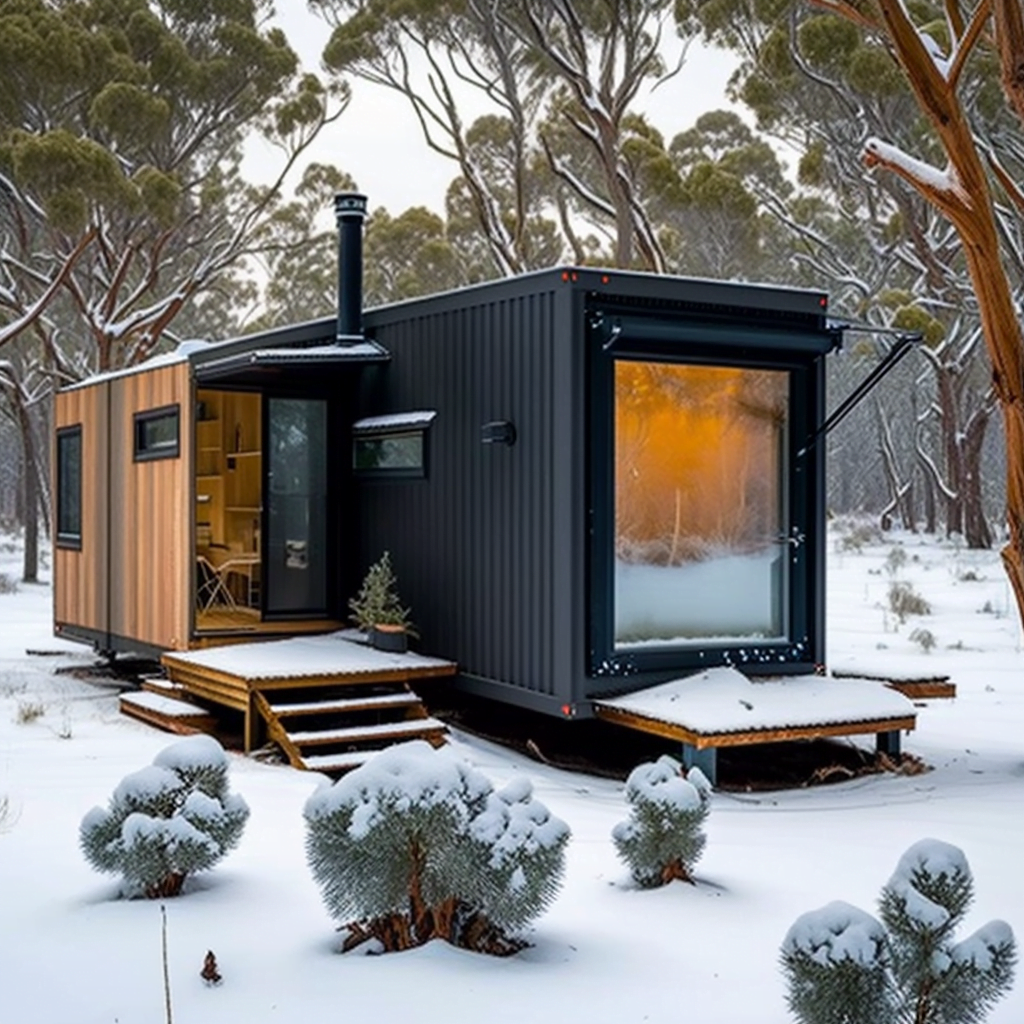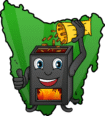It doesn’t matter how well insulated or built your tiny house is, you’ll need heating at some point. The best heater for a tiny house is one that works with the unique design of these houses. Tiny houses are unique in that you usually don’t have much space to heat, which is good, but it also means you probably don’t want a huge heater as it will take up too much of the limited space you have. You want a heater that isn’t too small nor too big and puts out just enough heat. You probably also want something that uses very little power or can be used off-grid as it’s not unusual for tiny houses to be off-grid setups.

Here’s why I think pellet heaters are the absolute best heater for a tiny house:
- Efficient and compact in size
- Precise control over heat output
- Eco-friendly and clean burning
- Affordable and work off-grid
Pellet Heaters and Tiny Houses
Forget wood heaters. If you want the best heater for a tiny house pellet heaters have you covered. They fit the bill perfectly. They come in various sizes, so no problem getting a small pellet heater, they will work off-grid, they give you near total control over the heat output so you won’t cook yourself, use easy to manage fuel and are eco-friendly. But don’t take my word for it. Read on as I break each one down and explain why I genuinely think pellet heaters are the best heat for tiny houses.
What’s a Pellet Heater?
If you haven’t read my how a pellet heater works post, I’ll do it here quickly. Pellet heaters are space heaters. They burn wood pellets which are fed into a burn pot that contains the fire. This fire is extremely efficient, meaning you get a lot of heat from a handful of pellets, because there is a fan that blows through the fire keeping it burning. The fire in the pellet heater heats a heat exchanger which in turn heats air that is blown out into the room heating it. Pellet heaters have the lovely heat you get from a wood heater but none of the hassle. So why are they good in tiny houses?
Tiny Houses Heating Requirements and Pellet Heaters
Tiny houses are naturally “tiny”, meaning you don’t have much space to heat. This isn’t to say you won’t need heating but you won’t require as much heat to stay warm. Furthermore, tiny houses tend to heat up very quickly, as they are usually very well insulated and small in size. Pellet heaters fit the bill perfectly here. Pellet heaters start and stop like a heat pump. Meaning, you push a button, they starting heating within minutes. You can then heat the room to a desired temperature, say 21 degrees. Once that temperature is hit, then your pellet heater can go into “low” heat mode, so you don’t get too hot or it can switch off completely. Total heat control.
Compare this with the most common heater in tiny houses, a wood heater. Wood heaters, even small ones, take time to heat up. Also, once your room as reached a warm temperature, you can’t “control” the heat as well as a pellet heater. You can’t set a wood heater to 21 degrees. All you can do is reduce the air flow to make the fire burn smaller. The problem here wood heaters put out a lot of heat, even when running on low. This doesn’t work well with tiny houses that are small in size and well insulated. Pellet heaters are a clear winner here as you can start and stop them and heat your house to a set temperature.
Tiny Houses Limited Space and Pellet Heaters
The next problem is limited space for a heater. This is why people opt for “small” wood heaters. The good news is there are plenty of small pellet heaters which work well in a tiny house. An added benefit, something most wood heaters don’t have, is pellet heaters can be vented through the wall. That’s a good thing because you can put the pellet heater in places a wood heater maybe couldn’t go as wood heaters typically vent upwards through the ceiling. You can vent a pellet heater this way also but you can also go through the wall. Put simply, you have more options on where you can install a pellet heater than you typically do a wood heater.
Off-grid Tiny Houses and Pellet Heaters
It’s not uncommon to find off-grid tiny houses. If this is you or what you are planning to do, then an electric heater obviously won’t work. Again, this is why wood heaters are so popular. They don’t require electricity to run. However, pellet heaters can be used off-grid. It’s true pellet heaters do need electricity, but it’s about the same as running a few LED light bulbs. There’s a good chance if you are off-grid then you already have some kind of solar setup with batteries. Pellet heaters use very little power and it would be very easy to add an extra battery or two to your current off-grid setup to compensate for the extra pellet heater electricity needs.
Limited Fuel Storage Space and Pellet Heaters
Something else to keep in mind is where are you going to keep the fuel for your heater? Since it’s a tiny house you probably don’t have the room to store firewood in, especially if you need a LOT of firewood. Pellet heaters burn wood pellets and are very efficient. Pellets are basically compress wood. Generally speaking, a 15kg bag of pellets is equal to about 45kg of firewood. That’s 3 times the difference. What this means is pellets take up much less space. Since they come in bags, pellets are also easy to store and you can put them anywhere provided they are out of the rain and not sitting on a dirt floor.
Finally, if you buy wood pellets today you can burn them the same day. They don’t need to be dried like firewood. This means you don’t need to have mountains of pellets. You can buy as little as you need. Maybe you go into town once a week. You could easily buy enough pellets, which since they come in bags will fit in any sized car, to get you through the week. Compare this to firewood where people usually have mountains of it drying as it can take years for green firewood to be ready to burn.
Pellet Heaters in an Eco-friendly Tiny House
Finally, many people opt for a tiny house because the environment is important to them, and pellet heaters are eco-friendly. Wood pellets are often made from recycled wood waste, like sawdust, which is good because a waste product is turned into something that can be used. Also, wood pellets typically use plantation timber. Plantation timber is grown specifically for the purpose of being used for timber. This is great because it means you aren’t cutting down old, natural forests that will never grow again. Finally, pellet heaters burn much cleaner than wood heaters. They put out basically no smoke and burn three times cleaner, so you won’t be polluting the air with smoke like you do a wood heater.
How to Size a Pellet Heater for a Tiny House
Pellet heaters typically come in a range of sizes, anywhere from 6kw to 13kw maximum heat output. I would strongly recommend going for a 6kw pellet heater. The good news is that’s the maximum heat output. Most pellet heaters run at 3kw on low, which is more than enough to heat a tiny house and it definitely won’t overcook you and make your home too hot. Again, why not just get a small wood heater instead of a small pellet heater? It all has to control over heat. A pellet heater has the lovely warmth of a fire but all the benefits of a heat pump, meaning you push buttons to control it.
Summary of Why Pellet Heaters are the Best Tiny House Heater
If you want real heat, don’t want to mess around with firewood and are looking for a heater that will work off-grid in your tiny house, then seriously take a look at pellet heaters. You’ll get total control over the heat output, much like a heat pump, but you still get the lovely natural warmth of a fire. There are a range of pellet heaters from expensive European models like Piazzetta pellet heaters to more budget friendly heaters and there are many different small pellet heaters available. See if there is a pellet heater retailer in your area because I think you’ll be amazed at just how good they are in a tiny house.
Resources
How much a tonne of wood pellets equals to firewood
